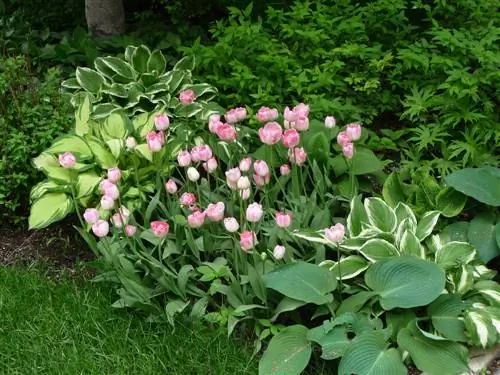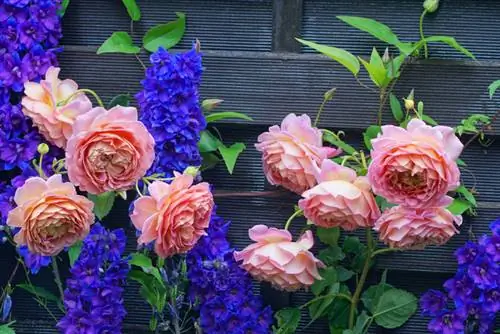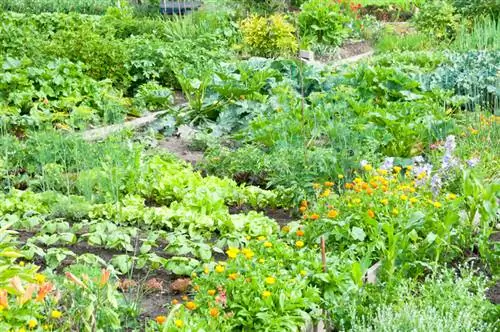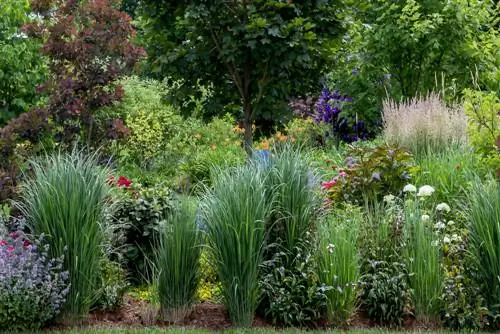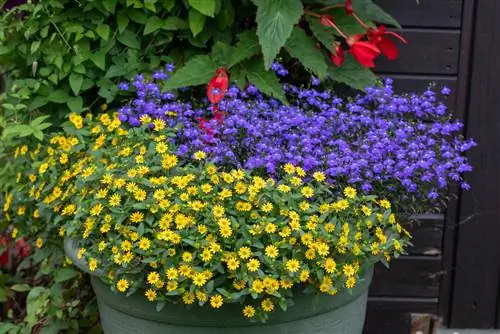- Author admin [email protected].
- Public 2023-12-16 16:46.
- Last modified 2025-01-23 11:22.
When you look into the world of perennials, it becomes apparent that the colors, shapes and sizes can be very different. However, in order to give beds etc a certain depth and tension, it is recommended to combine perennials with other plants.
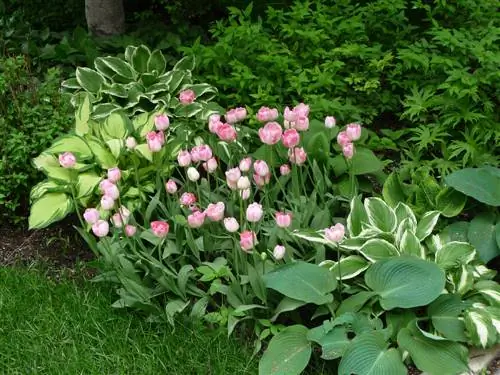
How can perennials be combined effectively?
In order to successfully combine perennials, flower color, flowering time, location requirements and height of growth should be taken into account. Popular combinations include autumn aster with feather bristle grass, hosta with tulips and steppe sage with floribunda rose.
What factors should you consider when combining perennials?
For combinations to be successful, you should always pay attention to the following points:
- Flower color: white, pink, violet, orange, red, yellow or blue
- Flowering time: March to October
- Location requirements: sunny to partially shaded, well-drained soil
- Growth height: up to 250 cm
Depending on the type of perennial, it blooms in spring, summer or from late summer to autumn. Take a close look at whether your chosen perennial harmonizes with which planting partner in terms of flowering.
The character of perennials can vary from species to species. Nevertheless, most perennials prefer a sunny location and do more or less well in partial shade. The companion plants should match.
While some perennials can grow to over 2 m tall, others stay close to the ground. Take into account the height to be achieved when combining.
Combine perennials in the bed or in the pot
In addition to the possibility of combining different perennials with each other, perennials look particularly striking when they are displayed with ornamental grasses. The ornamental grasses should be sized depending on the growth height of the respective perennial. Furthermore, some shrubs, climbing plants, roses, herbs and annual ground cover go well with perennials. Put together entourages that harmonize not only in terms of color, but also in terms of location.
Perfect partners for perennials include:
- Roses
- Boxwood
- Ornamental grasses such as pampas grass, miscanthus and moss grass
- Bulb flowers such as tulips, hyacinths and daffodils
- Lilac
- hydrangeas
- Herbs like lavender, thyme and sage
Combine autumn aster with feather bristle grass
You can create wonderful prairie-like accents with autumn asters and feather bristle grass in combination. The ornamental grass surrounds the perennial with its slightly overhanging flower spikes and gives it a touch of floating lightness.
Combine hostas with tulips
As ornamental foliage perennials, hostas enjoy the company of colorful flowering plants such as tulips. As bulbous plants, you don't need to plant the tulips every year, but rather once in the perfect place - in front of the hostas. For example, a few red tulips together with blue-green hostas are quite intoxicating.
Combine steppe sage with floribunda
As a perennial, steppe sage goes wonderfully with floribunda roses. The violet flower candles of the steppe sage are present at the same time as the flowers of the floribunda rose and contrast wonderfully when the flowers of the floribunda rose are colored red, yellow or pink.
Combine perennials as a bouquet in the vase
A majority of perennials are suitable for vase cutting. Especially those with long and strong stems are ideal for creating a bouquet. Ornamental grasses such as feather grass or pipe grass fit beautifully into the bouquet amidst perennials. In addition, other green elements such as ferns and eucalyptus leaves as well as roses are created to enrich such a bouquet.
- Leather Fern
- Eucalyptus
- Feather grass
- Pipegrass
- Roses
- Tulips
- hydrangeas

